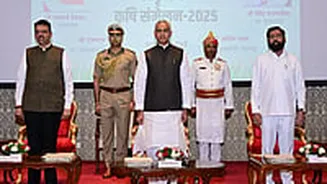Defining Regenerative Agriculture
Regenerative agriculture represents a holistic approach to farming that aims to revitalize the entire ecosystem. It goes beyond mere sustainability to actively
improve the soil, enhance biodiversity, and promote carbon sequestration. This contrasts with conventional agricultural practices which often degrade soil health through intensive methods and the use of synthetic fertilizers and pesticides. Regenerative agriculture includes various practices, such as cover cropping, no-till farming, and crop rotation, which work in concert to build soil organic matter, reduce erosion, and enhance water infiltration. The goal is to create a more resilient and productive agricultural system that benefits both the environment and the farmers. Regenerative agriculture aims to mimic natural ecosystems, promoting a balanced approach that supports healthy soil, reduces reliance on external inputs, and ultimately contributes to a more sustainable and equitable food system. This contrasts with practices that have caused land degradation worldwide.
Achieving Development Goals
The principles of regenerative agriculture align closely with many Sustainable Development Goals (SDGs). By improving soil health, it contributes to SDG 15 (Life on Land) by combating desertification, restoring degraded land, and promoting biodiversity. The practice also supports SDG 2 (Zero Hunger) by increasing food production through healthier soils and more resilient crops. Furthermore, regenerative agriculture promotes SDG 13 (Climate Action) by sequestering carbon in the soil, which helps to mitigate climate change. By reducing the need for synthetic fertilizers and pesticides, which require significant energy to produce, regenerative agriculture also indirectly supports SDG 7 (Affordable and Clean Energy). The adoption of regenerative practices in agriculture therefore plays a critical role in contributing to a more sustainable and equitable future, as it tackles environmental challenges and supports both food security and economic development.
Implementing Regenerative Strategies
Implementing regenerative agricultural practices requires a shift in mindset and a commitment to long-term planning. It starts with assessing the existing soil health and understanding the specific environmental challenges. Farmers can then choose appropriate practices, such as cover cropping, which involves planting non-cash crops to protect and enrich the soil, or no-till farming, which minimizes soil disturbance, which helps retain moisture and improve soil structure. Crop rotation, the practice of alternating different crops each year, helps to break pest cycles, improve nutrient availability, and diversify soil biota. Successful implementation also often involves collaboration among farmers, researchers, and policymakers, to share knowledge, access resources, and promote supportive policies. This approach also allows for continuous learning and adaptation, which allows farmers to fine-tune their methods and achieve the best results for their unique environments.
Addressing Challenges and Opportunities
Transitioning to regenerative agriculture also presents certain challenges. One of the primary obstacles is the initial investment required for new equipment, training, and the transition period, during which yields may be lower. Moreover, effective implementation depends on factors such as access to information, market incentives, and the specific characteristics of the local climate and soil. However, the opportunities are substantial. Regenerative agriculture can lead to increased profitability in the long run through reduced input costs, improved yields, and the potential for higher prices for sustainably produced products. It also creates a more resilient agricultural system that is better able to withstand the impacts of climate change, such as droughts and floods. Regenerative agriculture also offers opportunities for farmers to restore their connection to the land and contribute to a healthier environment.
Policy and Support
Government policies and initiatives play a crucial role in promoting regenerative agriculture. Financial incentives, such as subsidies for adopting regenerative practices, can encourage farmers to make the transition. Research and development efforts are also essential to improve and adapt regenerative methods to different agro-ecological zones. Education and training programs that equip farmers with the knowledge and skills they need to implement these practices are also important. The development of standards and certification systems that recognize and reward regenerative practices can also create market opportunities for farmers. By creating a supportive environment, policymakers can help ensure that regenerative agriculture becomes widespread, thereby contributing to environmental sustainability, food security, and the well-being of agricultural communities.














